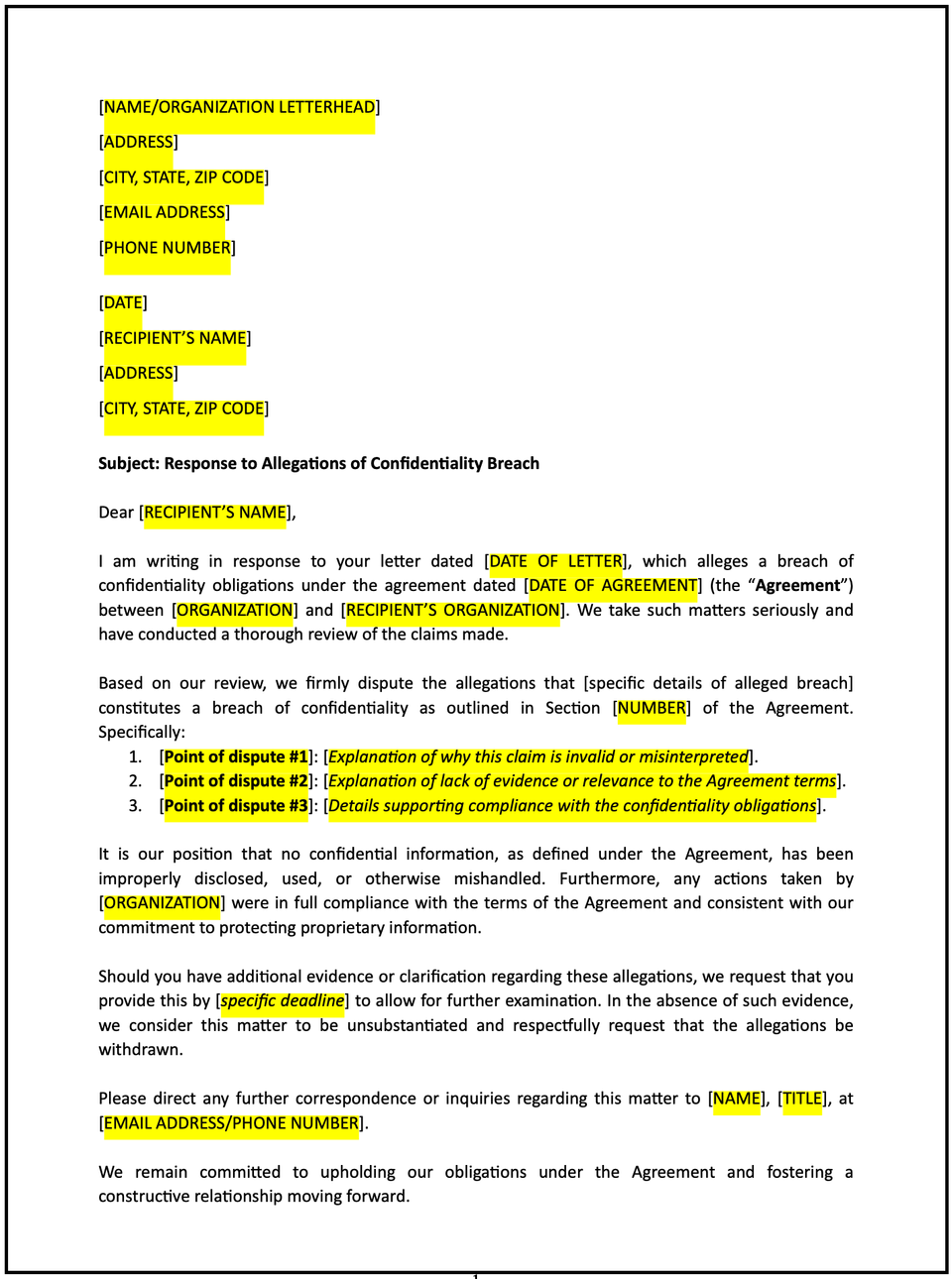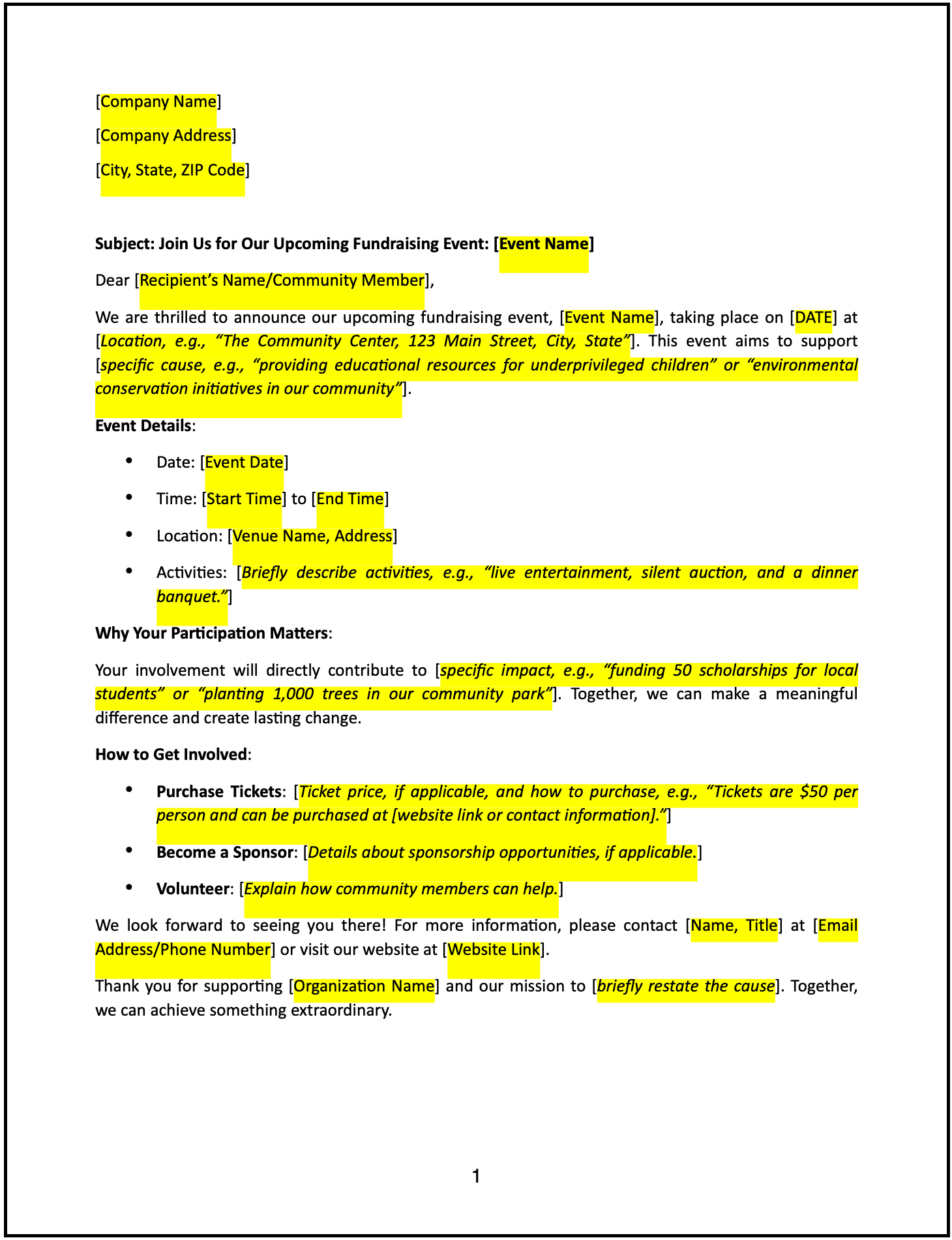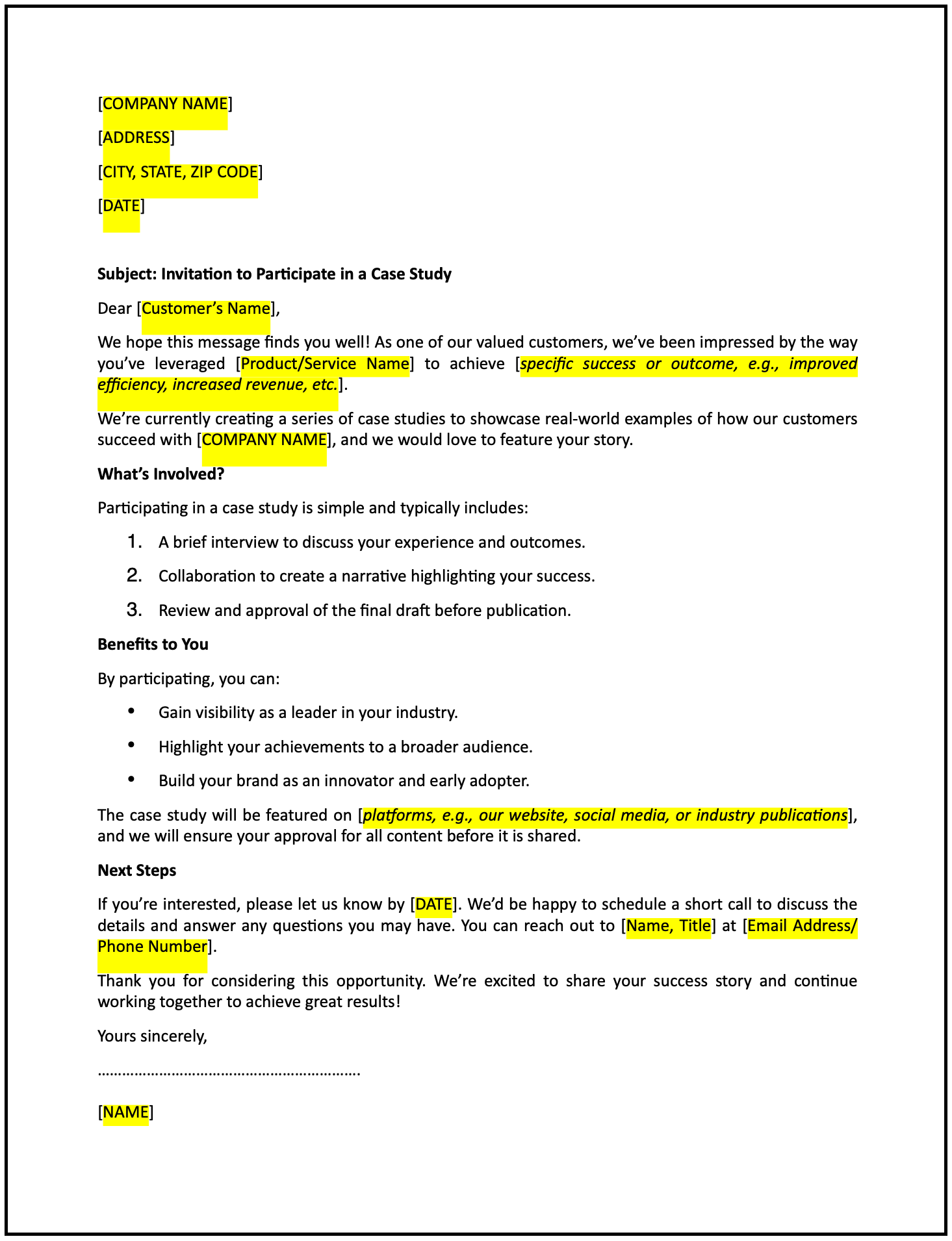Letter disputing allegations of confidentiality breach: Free template

Letter disputing allegations of confidentiality breach
A letter disputing allegations of a confidentiality breach is a formal communication used to contest claims made by another party that your organization has violated confidentiality obligations. This letter outlines the basis for the dispute, provides clarifications or evidence, and seeks to address the matter in a professional and constructive manner.
How to use this letter disputing allegations of confidentiality breach
- Open with an introduction: Address the recipient respectfully and acknowledge their concerns or allegations regarding a confidentiality breach.
- State the purpose: Clearly communicate your intent to dispute the allegations and provide the rationale for your position.
- Reference the agreement: Specify the confidentiality agreement or contractual clauses relevant to the matter.
- Provide context: Explain your actions or circumstances to clarify how they align with the confidentiality obligations.
- Offer evidence: Include relevant supporting documentation, timelines, or actions taken to demonstrate compliance with confidentiality terms.
- Reaffirm commitment: Emphasize your organization’s adherence to confidentiality and commitment to resolving misunderstandings professionally.
- Invite resolution: Propose a meeting or discussion to address the concerns collaboratively and reach an amicable resolution.
- Maintain a professional tone: Ensure the letter is respectful, clear, and focused on fostering understanding and resolution.
- Provide contact information: Include details for the recipient to reach out with questions or to discuss the matter further.
Benefits of using a letter disputing allegations of confidentiality breach
This letter ensures a structured and professional way to address allegations while maintaining trust and accountability. Here’s how it helps:
- Promotes transparency: Clearly disputing the allegations helps prevent misunderstandings and miscommunications.
- Reflects professionalism: A well-crafted letter demonstrates respect and a commitment to resolving disputes constructively.
- Encourages collaboration: Proposing resolution fosters a positive and cooperative dialogue.
- Builds trust: Addressing concerns transparently reinforces credibility and trustworthiness.
- Supports legal compliance: Providing evidence and clarifications ensures adherence to contractual obligations.
Tips for writing an effective letter disputing allegations of confidentiality breach
- Be specific: Clearly describe the allegations and your rationale for disputing them, referencing relevant agreements or facts.
- Use professional language: Maintain a respectful and constructive tone to foster collaboration.
- Provide context: Briefly explain your actions or circumstances to clarify your compliance with confidentiality terms.
- Highlight mutual benefits: Emphasize the importance of maintaining a positive and professional relationship.
- Include actionable steps: Share instructions for further discussions or propose a plan to resolve the matter.
- Keep it concise: Focus on the essential points while ensuring the tone is professional and engaging.
Frequently asked questions (FAQs)
Q: What details should I include in this letter?
A: Include references to the confidentiality agreement, specific allegations, your rationale for disputing them, and supporting evidence.
Q: Should I personalize the letter?
A: Yes, addressing the recipient by name and referencing specific allegations demonstrates attentiveness and professionalism.
Q: Who typically sends this letter?
A: Legal teams, compliance officers, or business owners typically send this letter.
Q: How formal should this letter be?
A: The tone should be professional, respectful, and focused on fostering resolution.
Q: When should this letter be sent?
A: Send the letter promptly after receiving the allegations to ensure timely communication and resolution.
Q: Can this letter include a request for evidence from the claimant?
A: Yes, requesting additional details or evidence from the claimant ensures clarity and supports your position.
Q: Is acknowledgment from the recipient required?
A: While not mandatory, requesting acknowledgment ensures the recipient understands and is considering your response.
This article contains general legal information and does not contain legal advice. Cobrief is not a law firm or a substitute for an attorney or law firm. The law is complex and changes often. For legal advice, please ask a lawyer.


